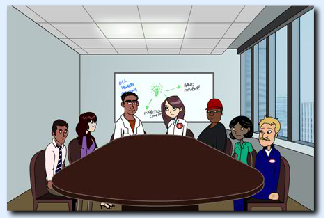
Image source: Opening page of the JOHSC Resource Tool
Earl Galavan describes his first experience on a health and safety committee – many years ago, when he worked in the logging transport industry.
“I still remember the boss sitting in the rec hall with the whole crew, and telling us we had to have these meetings, and he didn’t know what to do,” said Earl, who now works as an OHS advisor with SafetyDriven. “For a tough old logger, that was a big admission.”
Fast-forward to 2014 and you’ll find many resources to guide joint health and safety committee members – including those taking on this important role for the first time. Earl describes what kind of help is available in his recent newsletter article “I’m on the Safety What?” – including the WorkSafeBC Joint Health and Safety Committee Foundation Workbook and the Joint Occupational Health and Safety Committee Resource Tool.
I followed up with Earl to find out more about the value of a well-run safety committee.
“The safety committee is so often overlooked as a safety tool,” he said. “It is too often seen as ‘something we have to do’ and not something that really does things. Yet properly running, a safety committee is a great opportunity for employees to participate in safety at their workplace. The result for the employer is a team that helps them do many of the jobs needed to promote and maintain a high level of job safety.”
Another great source of guidance is the 2014 Safety Committee Conference on November 17 in Langley, BC – with post-conference courses available November 18.
According to the conference website, attendees will do the following:
1) Learn how other safety committees are solving their safety problems.
2) Meet WorkSafeBC annual safety committee training requirements.
3) Discover what’s new in Occupational Safety and Health.
To learn more, I contacted Mary Moltman, client services rep for the Pacific Safety Centre, host of the conference.
“It’s an excellent opportunity to get information and gain insight on a multitude of different topics,” Mary said. “Our keynote, Gary McDougall, is a former hostage negotiator and is speaking on ‘Dealing With Difficult People.’ Difficult people are everywhere, from the general public who feel they have been treated poorly to that guy or gal who just doesn’t want to hear about why he or she should wear their PPE.”
Times sure have changed when it comes to guiding the members of a safety committee on how to do a good job. Thanks to Earl and Mary for the extra info.


